Geography Test Yourself
Here's a really quick way of testing if you've learned the meanings of the key words in this section.
Look at the key word on the card and see if you can remember its definition.
If you get stuck, you can be shown the mnemonic to reveal an image that should help you remember.
To check if you're right, or remind you if you've forgotten, press the card to flip it.
Go through the whole list to see how many definitions you can recall.
Revisit any that you had difficulty remembering until you're confident you can
recall all of them.
Mineral Extraction
The removal of solid mineral resources from the earth
Mineral Extraction – The removal of solid mineral resources from the earth
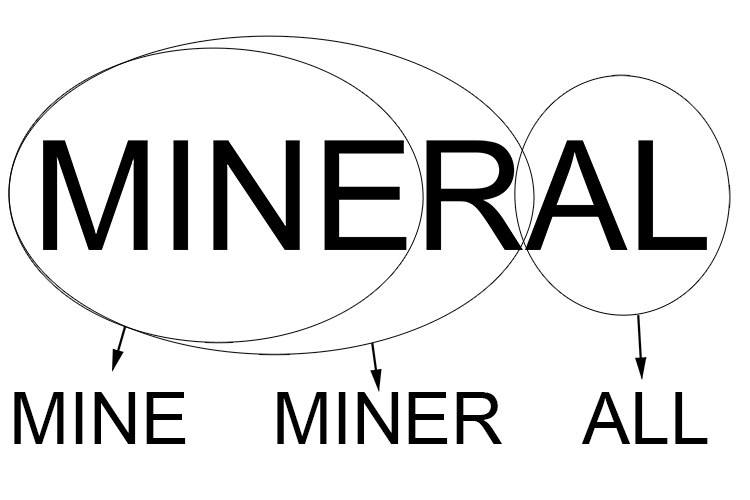
To remember mineral extraction look at the word mineral and realise that is has mine (to mine), miner and all.
Basically miners will mine all they can, extracting (mineral extraction) everything they can out of earth's ground.
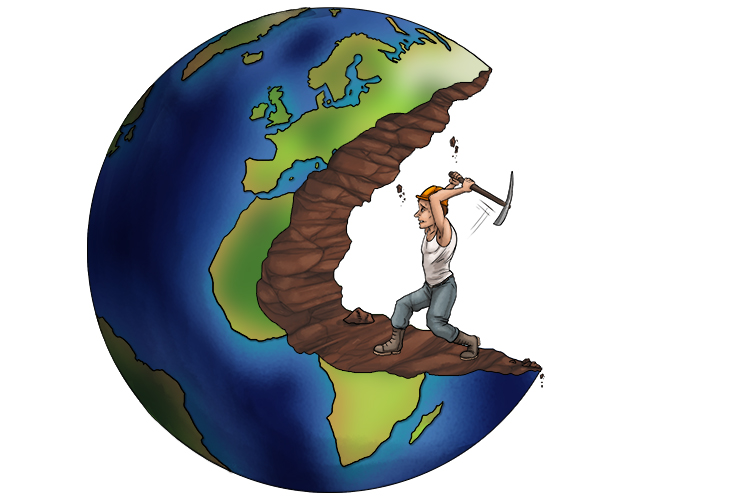
Many mined elements are used in our daily lives but there are many disadvantages too, from environmental damage, destruction of habitats and land scars.
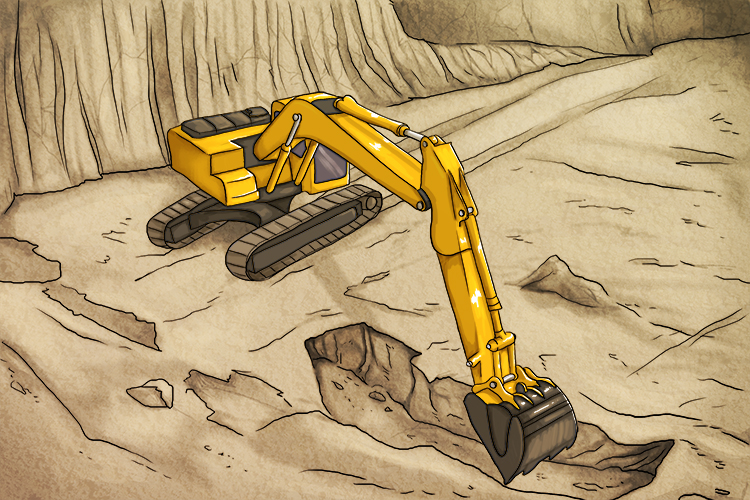
The Sahara Desert is located in Northern Africa. It is the largest hot desert in the world. It covers countries such as Algeria, Libya, Egypt and Chad.
Resources such as limestone and gypsum (for making plaster) can be found here and are valuable for the building industry.
Iron ore, manganese and copper are the chief metals mined in the Sahara.
Many mined elements get used in our daily lives, but there are many disadvantages too, from environmental damage, destruction of habitat and land scars.
Selective Logging
The cutting out of trees with are mature or inferior to encourage the growth of the remaining trees in a forest or wood
Selective Logging – The cutting out of trees with are mature or inferior to encourage the growth of the remaining trees in a forest or wood
.1cb5e7f.jpg)
Selective has the word "select" in it which helps to remind you that selective logging is selecting only certain trees to chop down. See below the difference between deforestation (non-selective) and selective logging:
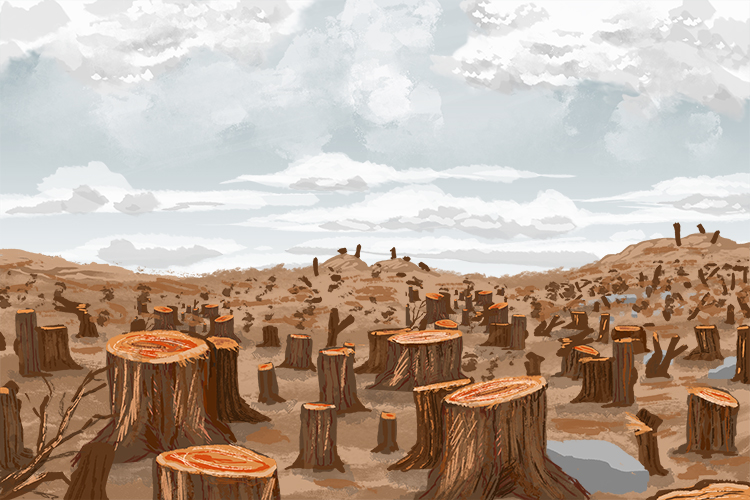
Deforestation (non-selective).
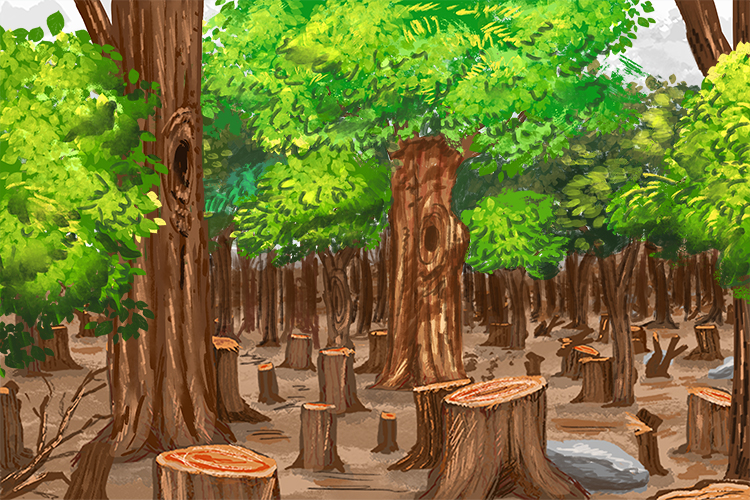
Selective logging.
Where selective logging is accompanied by replanting, the rainforest canopy can be preserved. It means the forest can recover as the younger trees gain more space and sunlight to grow. Properly controlled logging ensures that for every tree that is logged, another is planted.
Soil Erosion
Removal of topsoil faster than it can be replaced due to natural action (water and wind), animal and human activity
Soil Erosion – Removal of topsoil faster than it can be replaced due to natural action (water and wind), animal and human activity
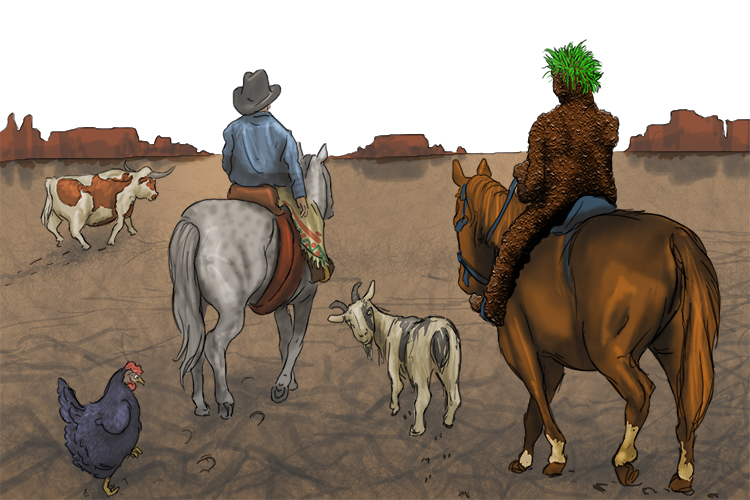
The soil man didn't stay. He rode off into the sun (soil erosion) with his animals and human help.
Top soil is eroded by animals, humans, wind and water:
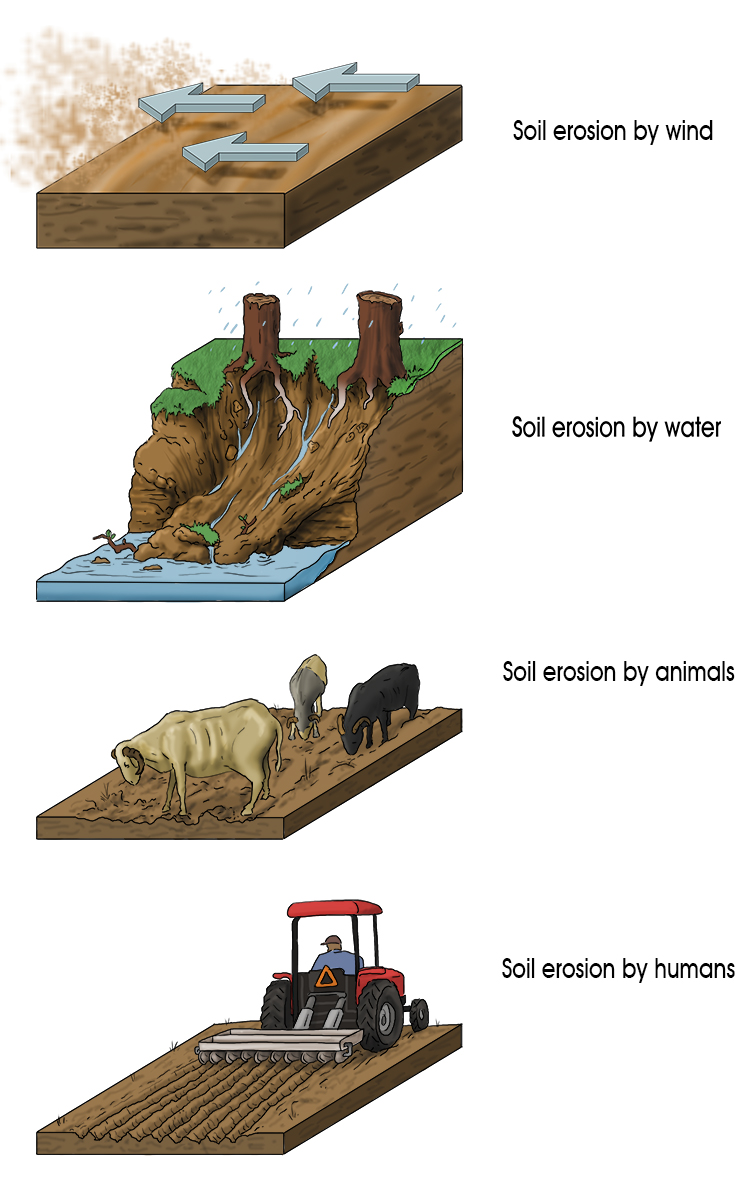
The roots of trees and other vegetation in tropical rainforests help to anchor the soil, so that it is not easily washed away.
If the ground is cleared, there is no longer anything to keep the soil intact and it can be washed away by rain. When soil is washed into rivers, it can cause major problems for creatures in the rivers and for people who depend on the water for drinking and livelihood.
Subsistence Farming
A type of agriculture producing food and materials for the benefit of the farmer and his family
Subsistence Farming – A type of agriculture producing food and materials for the benefit of the farmer and his family

In the suburbs, you can eke out an existence (subsistence farming) if you grow your own food.
In subsistence farming, output is targeted to the survival of a family or community. No profit element is involved.
Subsistence farming today takes place mostly in developing countries, notably large parts of rural Africa and parts of Asia and Latin America.
Around two billion people (currently just over 25 per cent of the world's population) in 500 million households survive as small-scale farmers, working less than two hectares (five acres) of land.
Most of today's subsistence farmers trade some of their products, but usually for goods they need rather than profit, so their produce still only meets their day to day needs.
Sustainability
Actions and forms of progress that meet the needs of the present without reducing the ability of future generations to meet their needs
Sustainability – Actions and forms of progress that meet the needs of the present without reducing the ability of future generations to meet their needs

Such a stain affects people's future ability (sustainability) to have their needs met. We need to stop these stains.
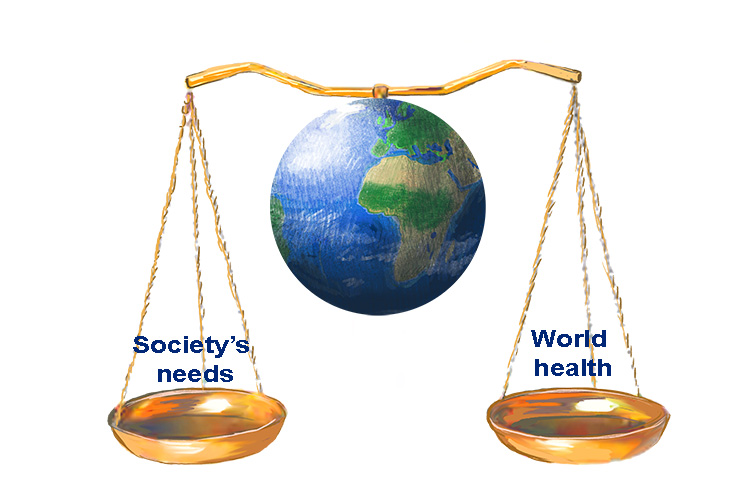
"Sustain" means to give support to, to hold up or keep up. It's easy to relate that to the development of systems and processes that can be "kept up" or "supported" to meet current needs, without causing any problems for future generations.
"Ability" means having skill or potential to do something. So, together, sustain and ability mean "kept up" or "supported" with "skill" and "potential".
Sustainability, in the environmental/social sense, means processes and activities through which we can avoid the depletion of natural resources, so that quality of life doesn't decrease over time.
The exploitation of resources, manufacturing operations, financial investments, technological development, wealth distribution and many other things are sustainable if they don't hurt the ecosystem and don't reduce quality of life.
There are three pillars of sustainability: economic, social and environmental, also known as "profit, people and planet" and "the triple bottom line". To be sustainable, development, investment and most other projects and ideas need to fully address all three - i.e., not just the bottom line (profit), but also social and environmental considerations.
Hot Deserts Biodiversity
The variety of life found in deserts that are hot, rather than cold
Biodiversity – THE VARIETY OF LIFE FOUND IN DESERTS WHICH ARE HOT, AS OPPOSED TO COLD DESERTS
We know that biodiversity means life variety, or the variety of life in the world or a specific habitat.
Bio-diversity = Life-variety
Hot deserts are areas with less than 250mm of rain per year.
Hot deserts are found around 2600 kilometres (1600 miles) either side of the equator i.e along the latitude lines called the Tropic of Cancer and the Tropic of Capricorn.
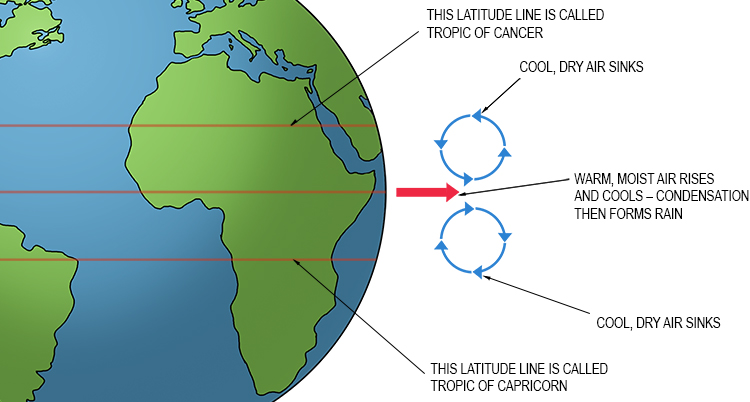
Air at the equator rises and cools, condensation then occurs forming rain. The air continues north and south until it nears the latitude lines called the Tropic of Cancer and the Tropic of Capricorn. At this point, the air is very dry and no condensation can form ( no rain can occur). The air drops down to earth and this is where deserts are formed.
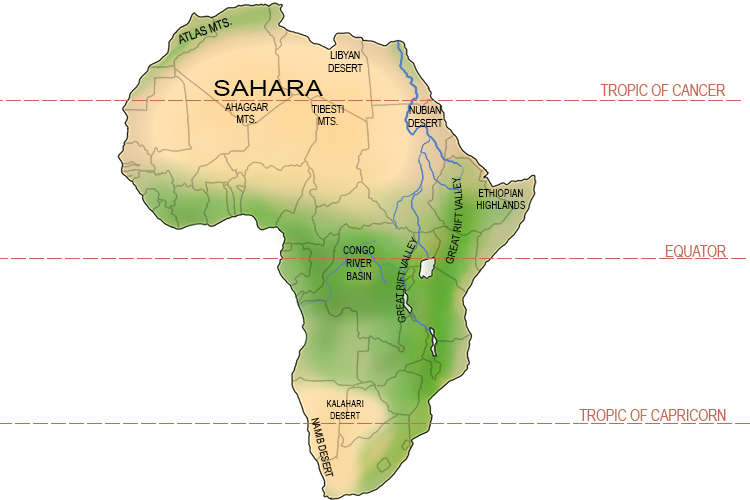
An overview of Africa's deserts and rainforests shows more clearly how hot deserts sit around the latitude line of the Tropics of Capricorn and Cancer.
The largest hot desert is the Sahara Desert.
In deserts such as this, there is little biodiversity, as few plants and animals have adapted to survive in these harsh conditions.

Cactus and camels have adapted to live in hot deserts.
Appropriate technology
Technology that is suited to the needs, skills, knowledge and wealth of local people in the environment in which they live
Appropriate technology – Technology that is suited to the needs, skills, knowledge and wealth of local people in the environment in which they live
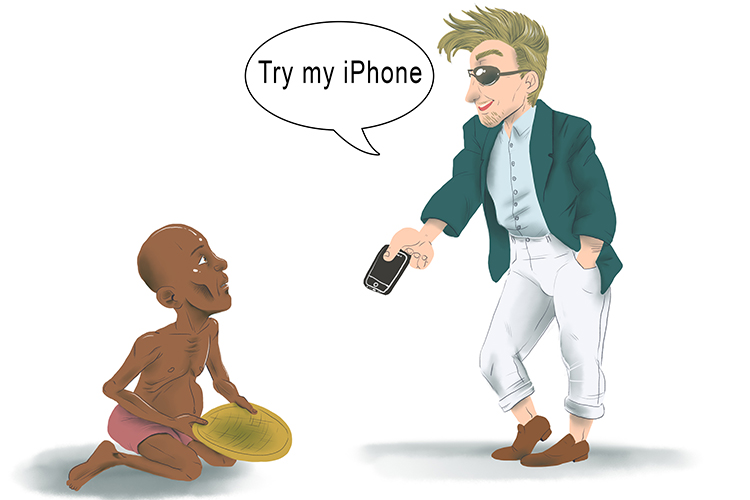
The way to remember appropriate technology is to think of the opposite. What would be inappropriate technology? As above, offering an iPhone would be inappropriate to a starving child, so appropriate technology would clearly be something suited to this child's needs.
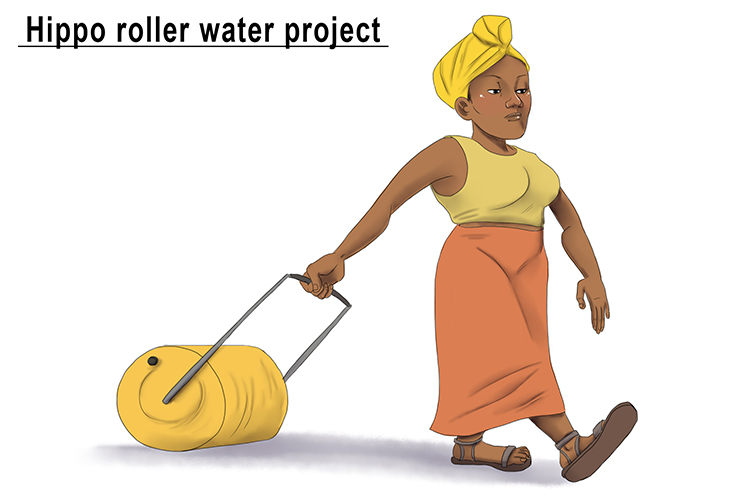
Instead of carrying five gallons of water on your head, this rolling plastic container allows you to move 25 gallons a lot more easily from a water well to your village.
Sounds like appropriate technology but...
What might be a more appropriate technology in this instance could be:
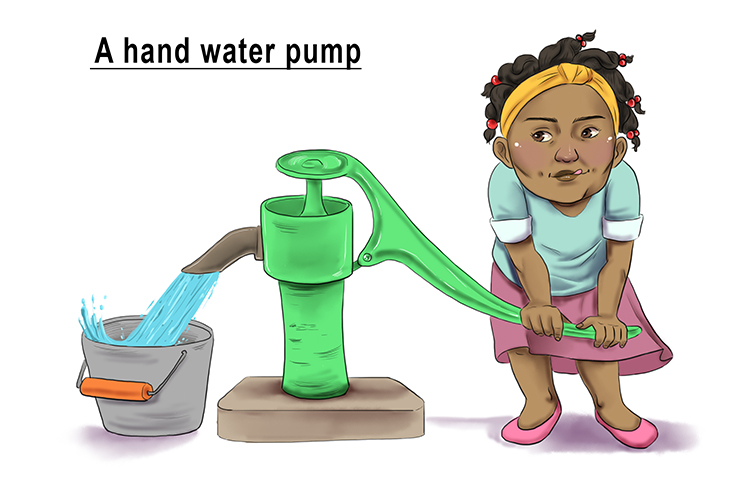
Mahatma Gandhi, who led a non-violent campaign for India's independence from Britain, was sometimes called "the father of appropriate technology". He shunned foreign textiles in favour of homemade cloth and being self-reliant.

Desertification
The process by which land becomes drier and degraded as a result of climate change, human actvities, or both
Desertification – The process by which land becomes drier and degraded as a result of climate change, human actvities, or both

Here is a desert certificate (desertification) to say well done, you have changed this into a desert. It's now drier and degraded land.
The principal cause of desertification is overgrazing. Other significant causes include urbanisation, climate change, overuse of groundwater, deforestation, natural hazards and tillage practices in agriculture that make soils more vulnerable to wind.
Desertification happens on all continents except Antarctica and affects the livelihoods of millions of people, including a large proportion of the world's poorest.
Hot Deserts and Cold Deserts
Deserts can vary in temperatures of extreme heat and extreme cold but both have very low rainfall
Hot Deserts and Cold Deserts – Deserts can vary in temperatures of extreme heat and extreme cold but both have very low rainfall
NOTE: Hot or Cold temperatures do not determine whether land can be classified as desert. It is determined by the fact that the area has very low rainfall and the area is barren.
HOT DESERT – VERY LITTLE RAIN
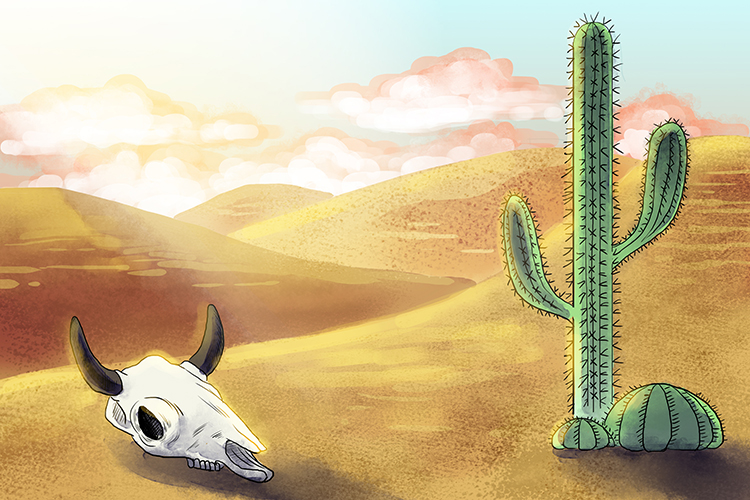
COLD DESERT – VERY LITTLE RAIN
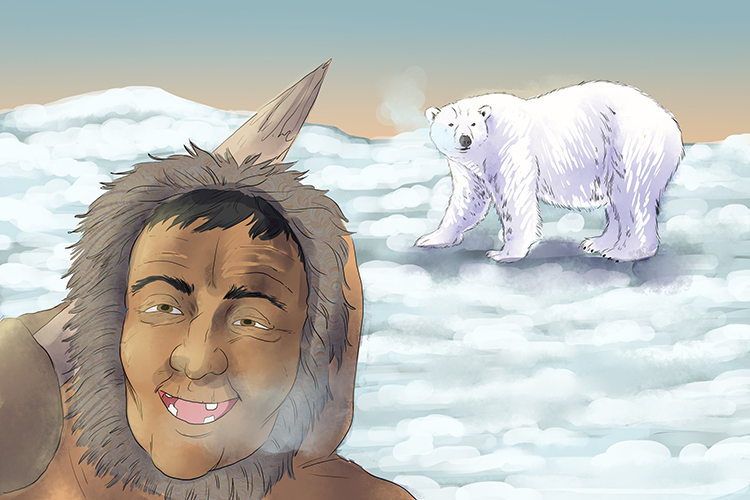
The term "hot desert" hints that there are also cold deserts, and vice versa. This suggests that the definition of deserts doesn't depend on temperature.
DESERTS = very low rainfall and barren areas
The factor that determines if land qualifies as a desert is:
250mm or less of rain per year
When it snows in cold deserts like the Arctic, the snow does not melt but becomes the ground. However even if you melted it, there would still be less than the equivalent 250mm of rain per year, so this would be classified as a cold desert.
Hot Deserts Mineral Extraction
The removal of solid mineral resources from the earth
Mineral Extraction – The removal of solid mineral resources from the earth

To remember mineral extraction look at the word mineral and realise that is has mine (to mine), miner and all.
Basically miners will mine all they can, extracting (mineral extraction) everything they can out of earth's ground.

Many mined elements are used in our daily lives but there are many disadvantages too, from environmental damage, destruction of habitats and land scars.

The Sahara Desert is located in Northern Africa. It is the largest hot desert in the world. It covers countries such as Algeria, Libya, Egypt and Chad.
Resources such as limestone and gypsum (for making plaster) can be found here and are valuable for the building industry.
Iron ore, manganese and copper are the chief metals mined in the Sahara.
Many mined elements get used in our daily lives, but there are many disadvantages too, from environmental damage, destruction of habitat and land scars.
Overgrazing
Grazing too many livestock for too long on the land, so it is unable to recover its vegetation
Overgrazing – Grazing too many livestock for too long on the land, so it is unable to recover its vegetation
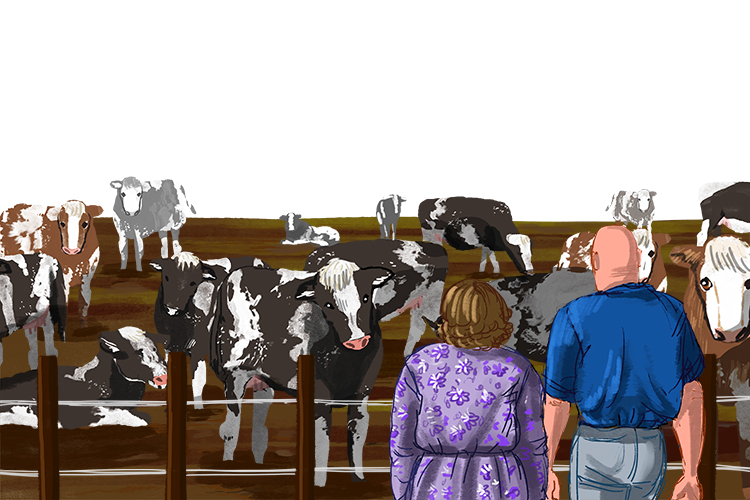
They looked over at what was the grazing (overgrazing) area and all they could see were cattle and no grass to graze. It had all gone.
Overgrazing is not caused by cattle alone. Sheep and goats also contribute to the problem.
For instance, overgrazing by millions of sheep and goats is the major cause of degraded land in East Asia's Mongolian Steppe, one of the largest remaining grassland ecosystems.
Cold Environments Biodiversity
The variety of life found in deserts that are cold, rather than hot
Biodiversity – THE VARIETY OF LIFE FOUND IN DESERTS WHICH ARE COLD, AS OPPOSED TO HOT DESERTS
We know that biodiversity means life variety, or the variety of life in the world or a specific habitat.
Bio-diversity = Life-variety
Cold deserts are areas with less than 250mm of rain per year.
The Arctic is always colder than 0°C. When it snows in cold deserts like the arctic, the snow does not melt but becomes the ground. However, even if you melted the snow that fell in a year, it would still be less than the equivalent of 250mm of rain per year.
Plants and animals have learnt to adapt to these cold environments.
Lichens, which are a complex life form, are a symbiotic partnership of two separate organisms, a fungus and an alga, that can survive in these cold environments.
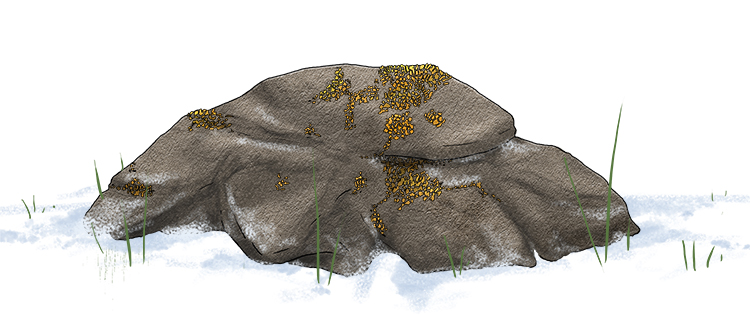
Lichen does not need soil to grow and can survive even beneath the snow.

Cushion plants are low growing, compact plants which helps them retain moisture from drying winds. They also trap airborne dust which provides a source of nutrients.
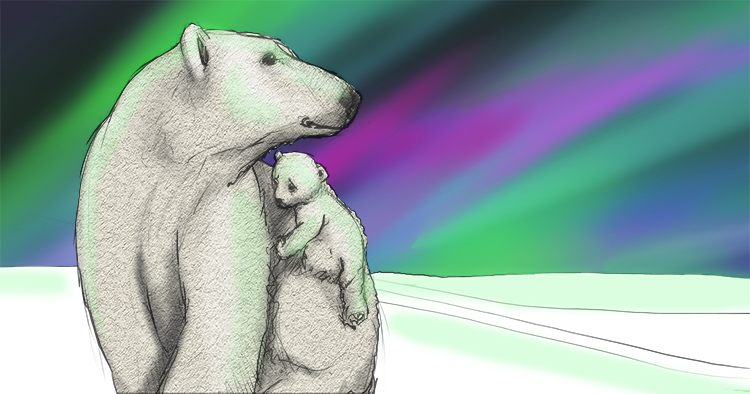
Polar bears have adapted to their environment too; they have translucent, hollow, white hair that helps with camouflage and insulation. They also have small ears to reduce heat loss.
Fragile Environment
An environment that is both easily disturbed and difficult to restore if disturbed
Fragile Environment – An environment that is both easily disturbed and difficult to restore if disturbed

With her fractured leg, she wasn't very agile (fragile). She damaged her leg so easily and it will be difficult to restore it.
Cold environments are among the last remaining wilderness areas on Earth. They have fragile ecosystems. Development such as mining can put them at risk of damage.
Governments play a key role in ensuring that the technology used in cold environments is managed responsibly. International agreements allow the setting of standards to ensure that economic development does not happen at the expense of the environment.
An example is the Antarctica Treaty, which is supported and recognised by around 50 countries. Conservation groups put pressure on governments not to exploit the resources found in cold environments.
Infrastructure
The basic equipment and structures (such as roads, utilities, water supply and sewage) that are needed for a country or region to function properly
Infrastructure – The basic equipment and structures (such as roads, utilities, water supply and sewage) that are needed for a country or region to function properly
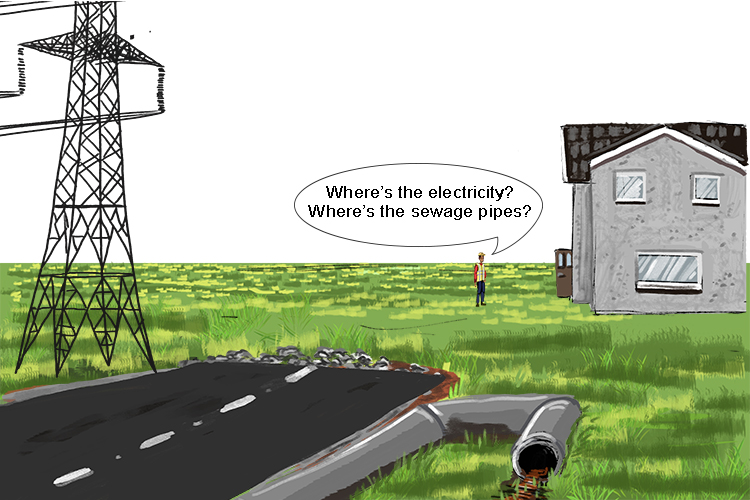
In order for a structure (infrastructure) to be built, you need roads and electricity pylons, to name but a few of the requirements to function.
Investment in infrastructure can boost the economy of a country by increasing its potential supply capacity. As an example, improving transport links makes workers more mobile, which in turn makes labour markets more efficient, thereby increasing productivity.
However, increased infrastructure can be harmful to the environment. The surge towards improved infrastructure in some developing countries is causing increased CO2 emissions and destroying wildlife environments, leading to reductions in biodiversity.
Cold Environments Mineral Extraction
The removal of solid mineral resources from the earth
Mineral Extraction – The removal of solid mineral resources from the earth

To remember mineral extraction, look at the word mineral and realise that is contains mine (to mine), miner and all.
Basically miners will mine all they can, extracting (mineral extraction) everything they can out of earth's ground.

Many mined elements are used in our daily lives but there are many disadvantages too, from environmental damage, destruction of habitats and land scars.
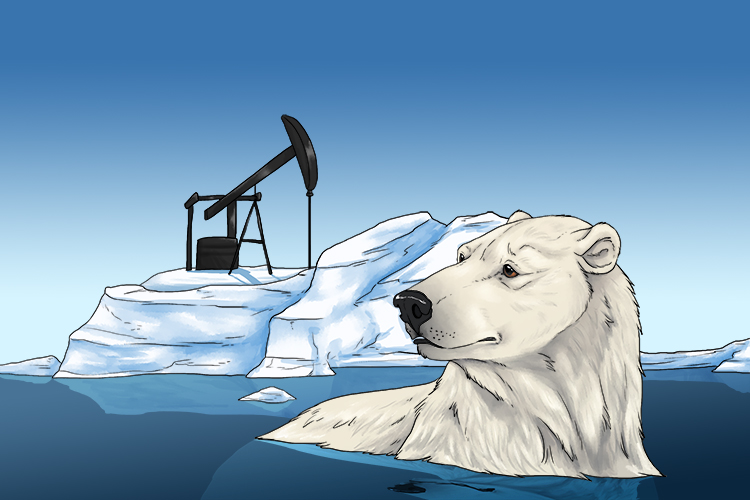
There is currently much international discussion about the large underground mining that could occur in cold environments like the Arctic. Nearly every metal can be found in large quantities, as well as huge amounts of oil.
Permafrost
Permanently frozen ground, found in polar and tundra regions
Permafrost – Permanently frozen ground, found in polar and tundra regions
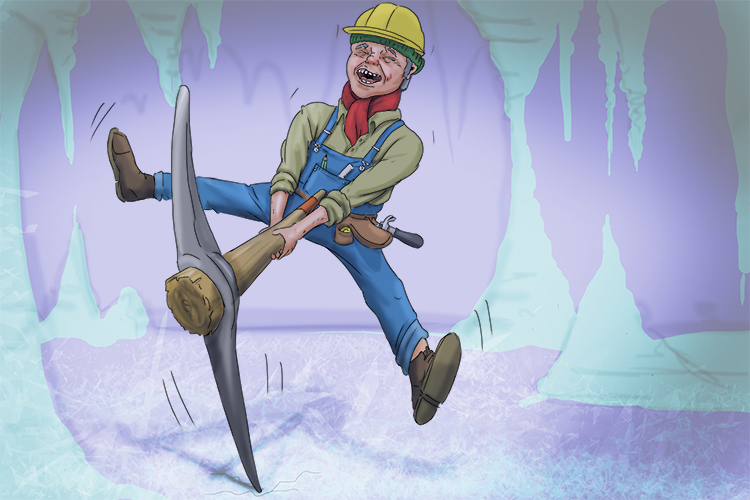
Permanently frosty (permafrost), the ground was solid, permanently frozen.
Even at the height of summer, the ground beneath the surface remains frozen in these polar and tundra regions. Plants that need deep root systems are unable to survive. The tundra can only support low-growing plants such as shrubs, mosses and lichen.
The combination of permafrost, very short summers and seasonal waterlogging – when water submerges land and makes it marshy – makes it impossible for trees to grow in these areas.
Polar
The regions of the far North and south
Polar – The regions of the far North and south
The regions are dominated by the earth's polar ice caps, the northern one resting on the Arctic Ocean and the southern one on the continent of Antarctica.
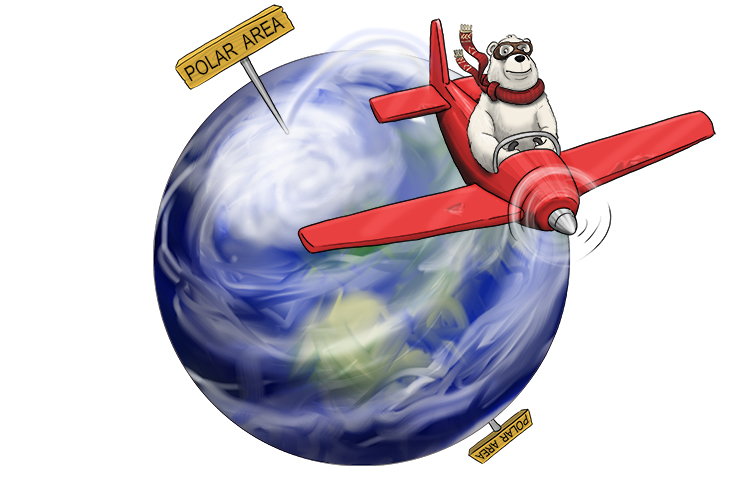
The polar (polar) bear flew from the North Pole to the South Pole and found there were no polar bears on the other side of the world. She thought this was a bit strange, considering there was a sign saying 'polar area' at each end of the world.
Polar regions are the coldest and most inhospitable on Earth, but still a surprising range of wildlife manages to survive. Resident creatures of the Northern polar region include polar bears, arctic foxes and snowy owls. In the southern polar region, there are penguins, and both regions have species of seal. Only six of the world's thirty-five species of seal live in Antarctica, but those six make up the vast majority of all seals.
Very short-rooted plants such as lichens and mosses survive in northern and southern polar regions.
Tundra
The flat, treeless Arctic regions of Europe, Asia and North America, where the ground is permanently frozen. Lichen, moss, grasses and dwarf shrubs can grow
Tundra – The flat, treeless Arctic regions of Europe, Asia and North America, where the ground is permanently frozen. Lichen, moss, grasses and dwarf shrubs can grow
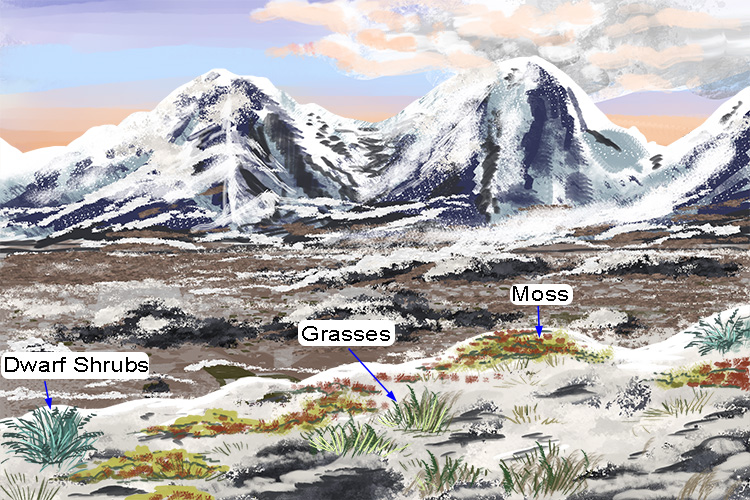
Tons of dramatic (Tundra) landscapes but no trees.
NOTE:
There is also Alpine tundra, e.g., in the Swiss Alps. So, two types: 1. Arctic tundra 2. Alpine tundra.
For most of the year, tundra lands are covered with snow, but a brief summer brings bursts of wildflowers.
Mountain goats, sheep, marmots and birds live in Alpine, or mountain, tundra. They feed on the tundra's low-lying plants and insects.
Cushion plants and other hardy flora survive in the mountain zones by growing in rock depressions, where it is warmer and they are sheltered from the wind.
Arctic tundra – where the average temperature is -30 to 20 degrees Fahrenheit (-34 to -6 degrees Celsius) – supports a number of animal species including Arctic foxes, polar bears, grey wolves, caribou, snow geese and musk oxen. The summer growing season – when the sun shines up to 24 hours a day – lasts just 50 to 60 days.
Wilderness Area
A natural environment that has not been significantly modified by human activity
Wilderness Area – A natural environment that has not been significantly modified by human activity
Wilderness areas are the most intact, undisturbed areas left on earth – places that humans do not control and have not developed.
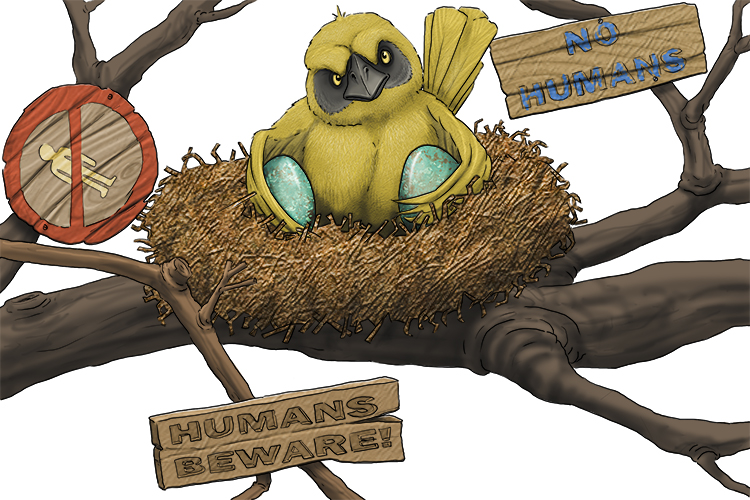
No matter how wild her nest (wilderness) looked, she would let no human near it.
Wildernesses are natural environments that have not been significantly modified by human action.
Cold environments are among the last wilderness areas on Earth. They have fragile ecosystems and are protected by international agreements because some types of economic development would put them at serious risk.
Sustainable development in cold environments involves the use of appropriate technology to avoid disturbing wildlife as far as possible.
Other examples of wildernesses include:
- Marine wildernesses
- National parks and forests
- Amazon rainforest
- Congo rainforest
- Australian Outback
Coastal Transportation
The movement of eroded material by suspension, solution, traction and saltation caused by longshore drift
Transportation – The movement of eroded material by suspension, solution, traction and saltation caused by longshore drift
The transportation of material along the coast is caused by longshore drift.
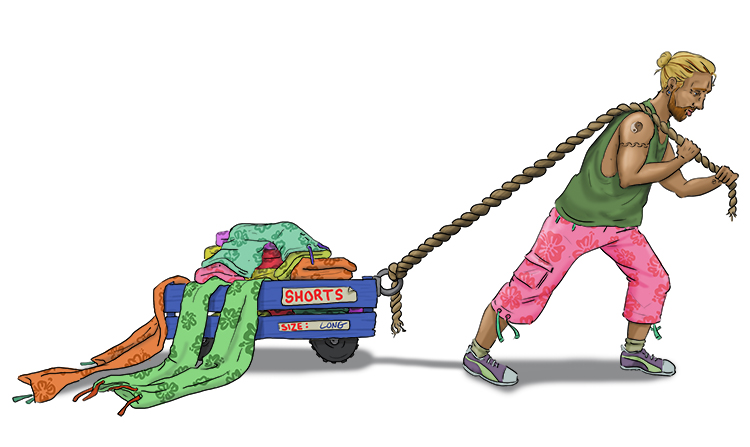
He transported (transportation) the long shorts (caused by longshore drift).
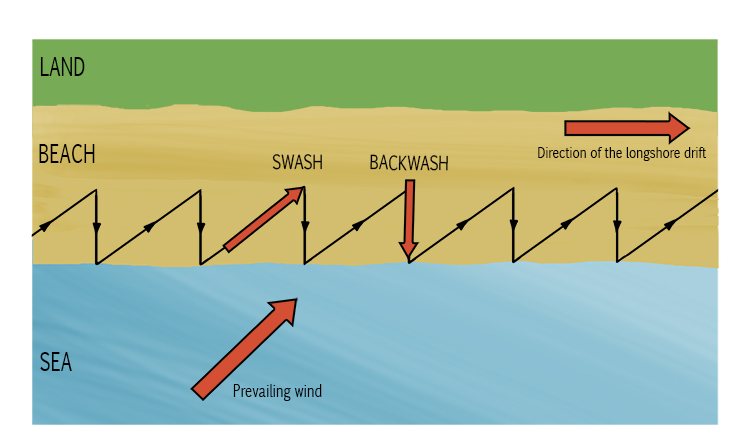
Although longshore drift is the main process of transportation, the material moves in four different ways.
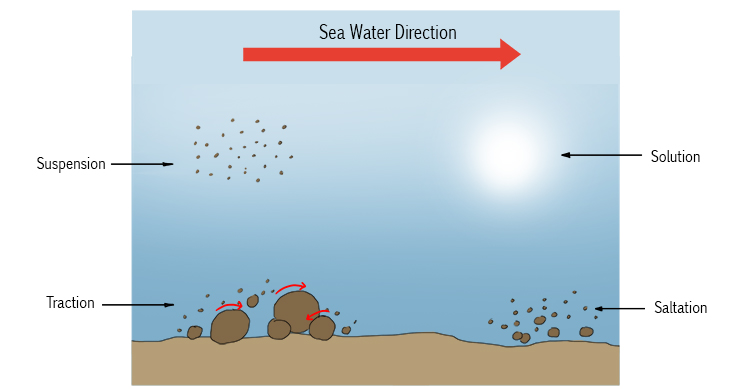
Suspension: Fine, light material is carried by the sea water.
Solution: Minerals like chalk and limestone are dissolved into the sea water and are then carried along the coastline and away into the deep sea. You cannot even see them moving away.
Traction: Larger rocks are rolled along the sea bed.
Saltation: Small pebbles and stones are bounced along the sea bed or against cliff faces.
To remember that transportation moves material in four ways – suspension, solution, traction and saltation – recall the following:
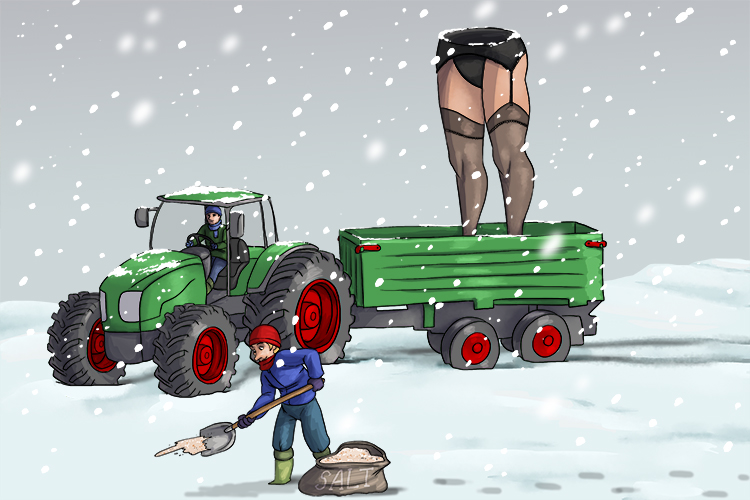
Transport (transportation) was the solution (solution) to moving the large suspenders (suspension) so a tractor (traction) was used, but they had to salt (saltation) the roads first.




.1cb5e7f.jpg)































